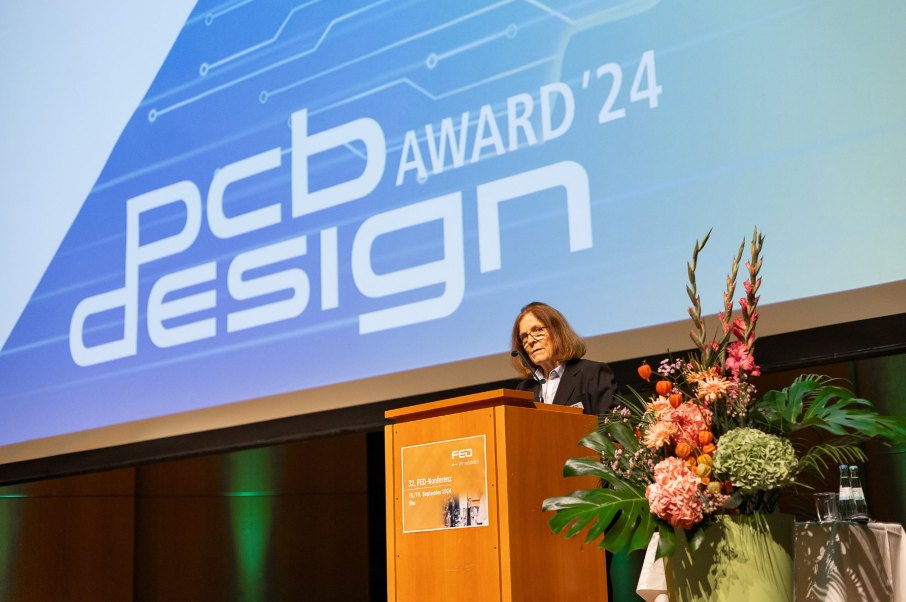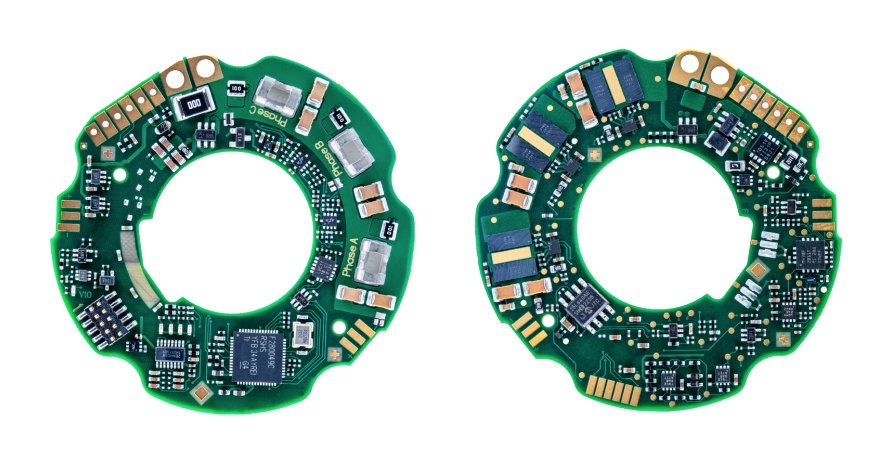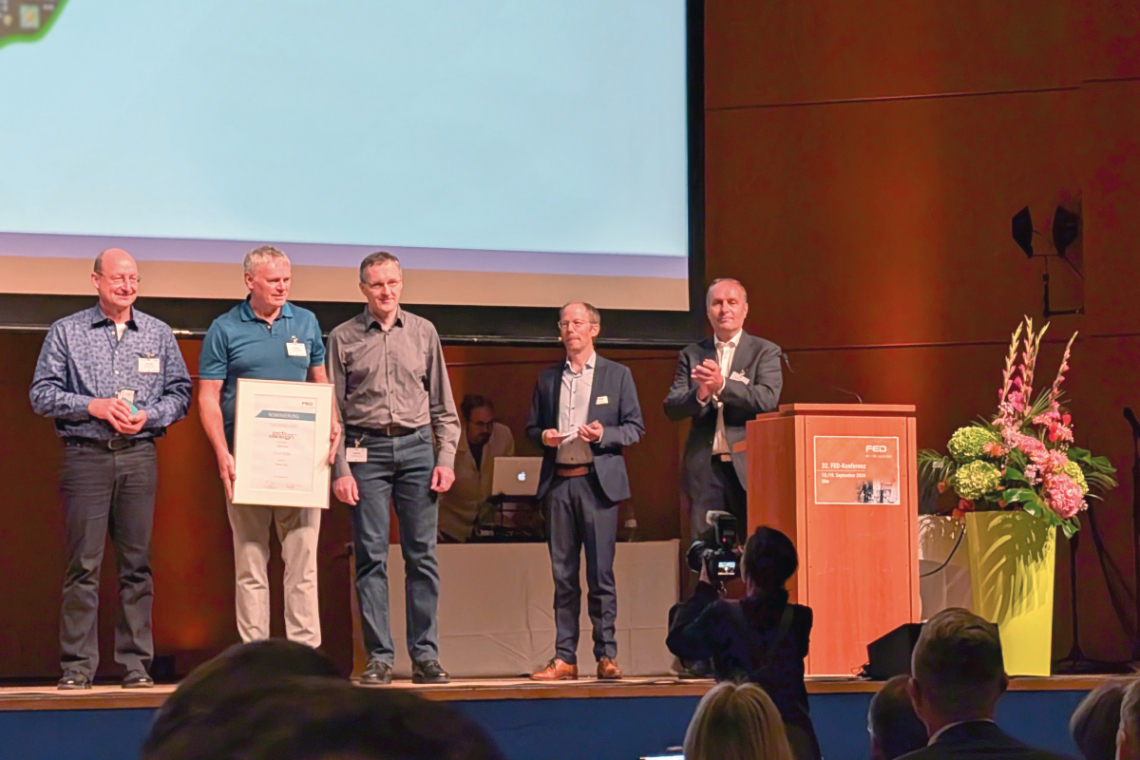On September 18, the much-anticipated 'PCB Design Award' was presented at the FED conference in Ulm. After the opening by jury chairwoman Erika Reel, FED Managing Director Christoph Bornhorn began with the presentation of the nominations and the announcement of the winners.
Udo Cochet, Rosen Technology and Research Center, won in the '3D/Installation Space' category. The winning project is a module for recording and storing sensor data in a pipeline inspection system, consisting of four stacked assemblies. The limited installation space within the module required a precise and space-saving arrangement of the electronics. According to the jury, strategic placement and innovative thermal management ensured particularly efficient use of the installation space.
 Opening of the award ceremony by Erika Reel
Opening of the award ceremony by Erika Reel
Alois Spieß, TQ-Group, received the award in the 'High Power' category. The design comprises a control circuit for a 3-phase motor in which a high power density had to be implemented in a small space. A major challenge in this project was the impedance-controlled cables and high currents that had to be mastered in the design process. According to the jury, these were solved well with a simple printed circuit board just 1.2 mm thick. Heinz Hornung was involved in the project. The 'High Density' category was won by Thomas Strunz from Zollner Elektronik. The winning design is a hardware accelerator card with STX chiplets and is used in energy-efficient supercomputers. The jury was impressed by the design due to its exceptional precision, well thought-out construction and extensive documentation. According to the jury, reliability, electrical performance and economic manufacturability were impressively observed and implemented. Martin Krieger, Matthias Kufner and Diana Pritzel were named as contributors.
 Award-winning design by Alois Spieß, TQ-Group
Award-winning design by Alois Spieß, TQ-Group
There was no award this time in the 'Simply Ingenious' category. Christoph Bornhorn said during the award ceremony that although several submissions had been received, no nominations could be made.
A detailed follow-up report on the FED conference will follow in the next issue of PLUS.


